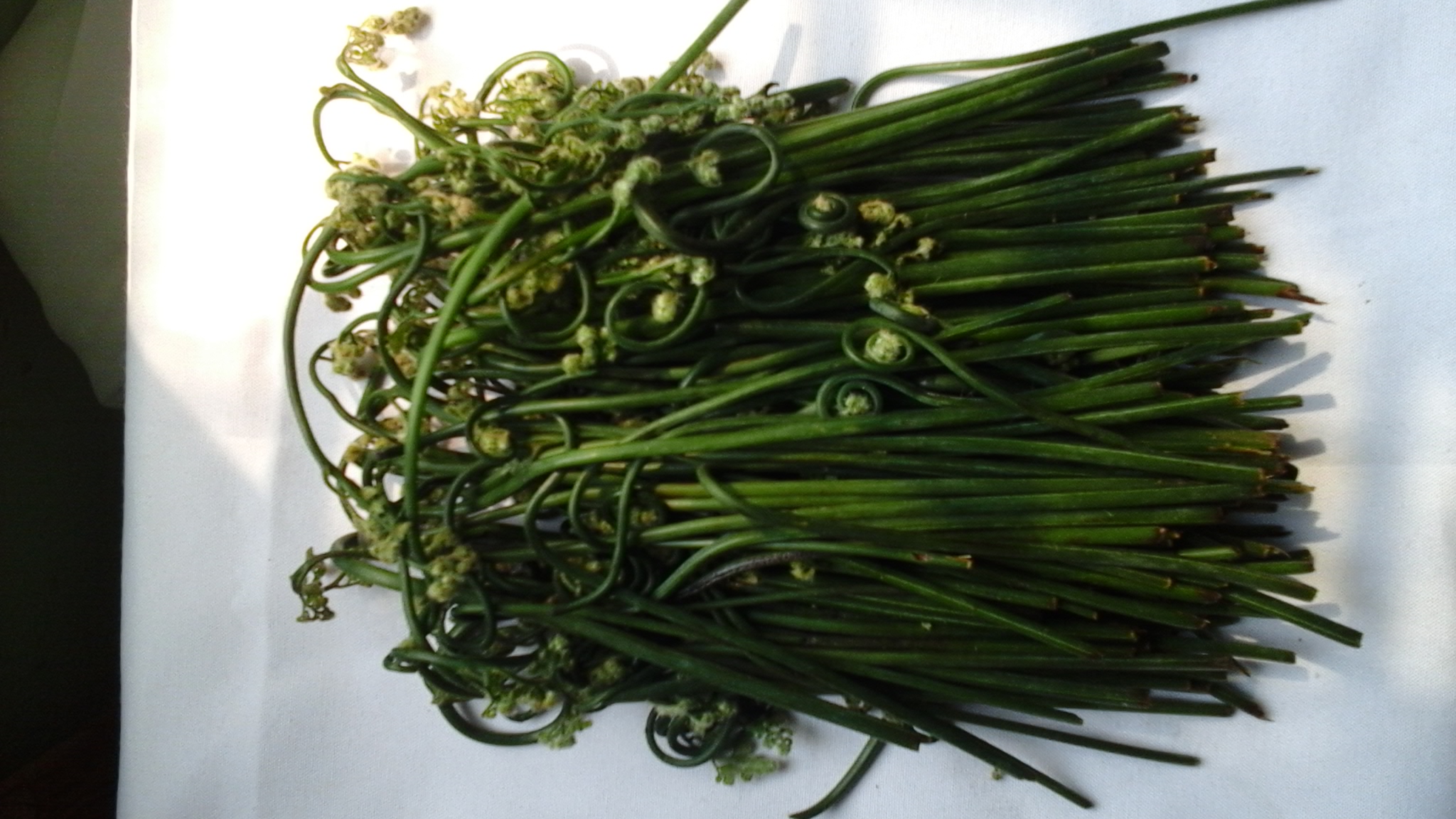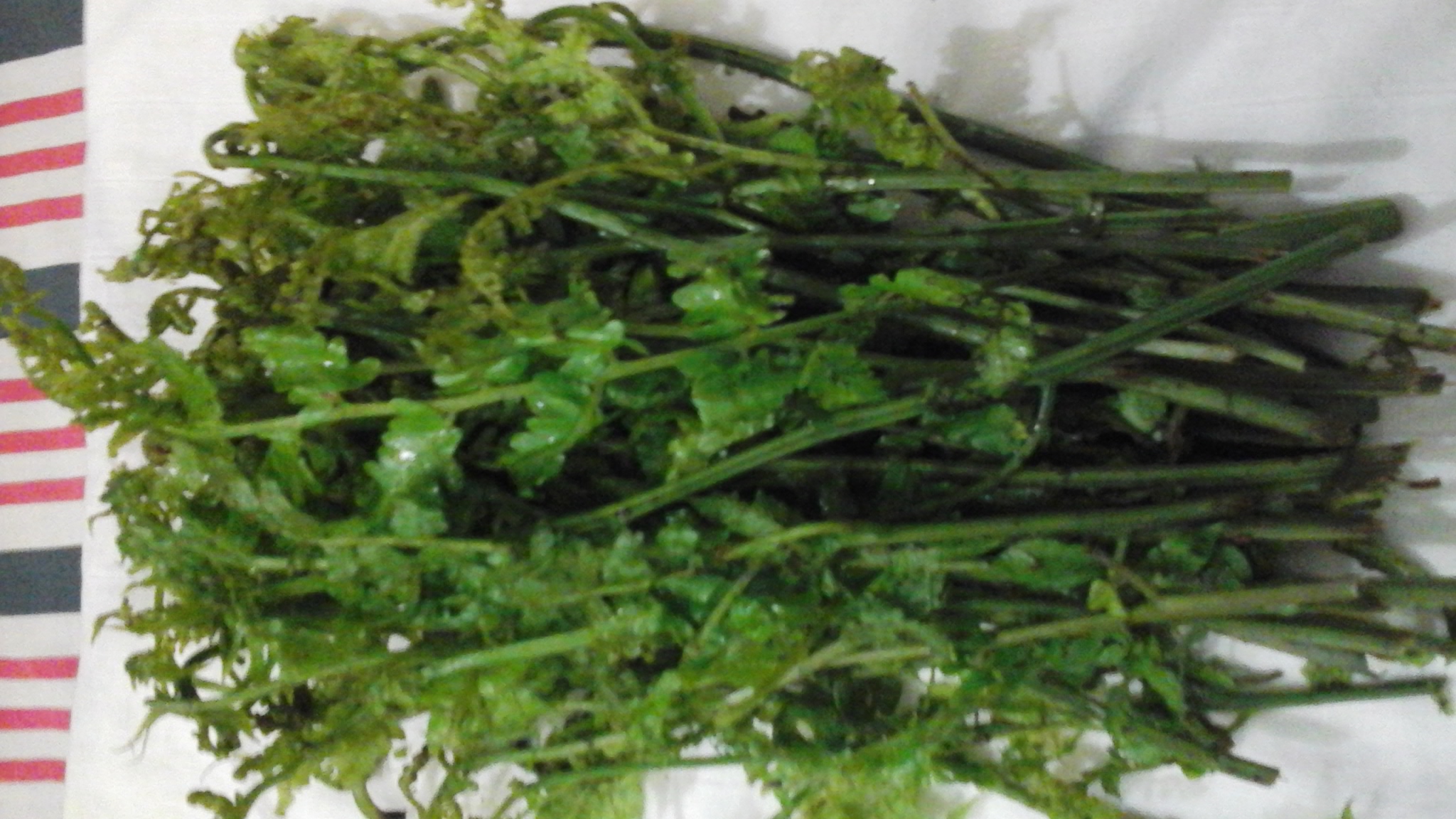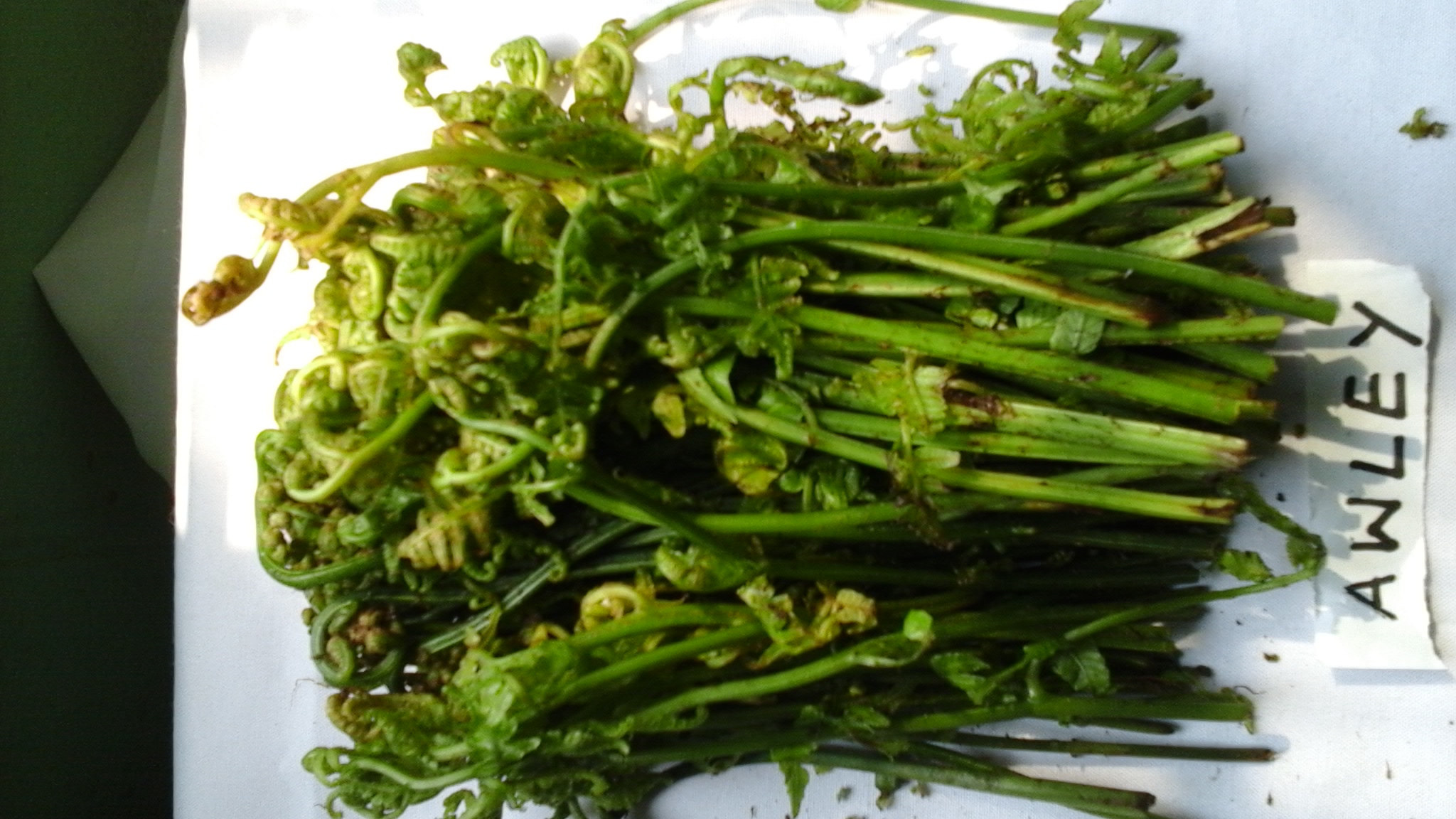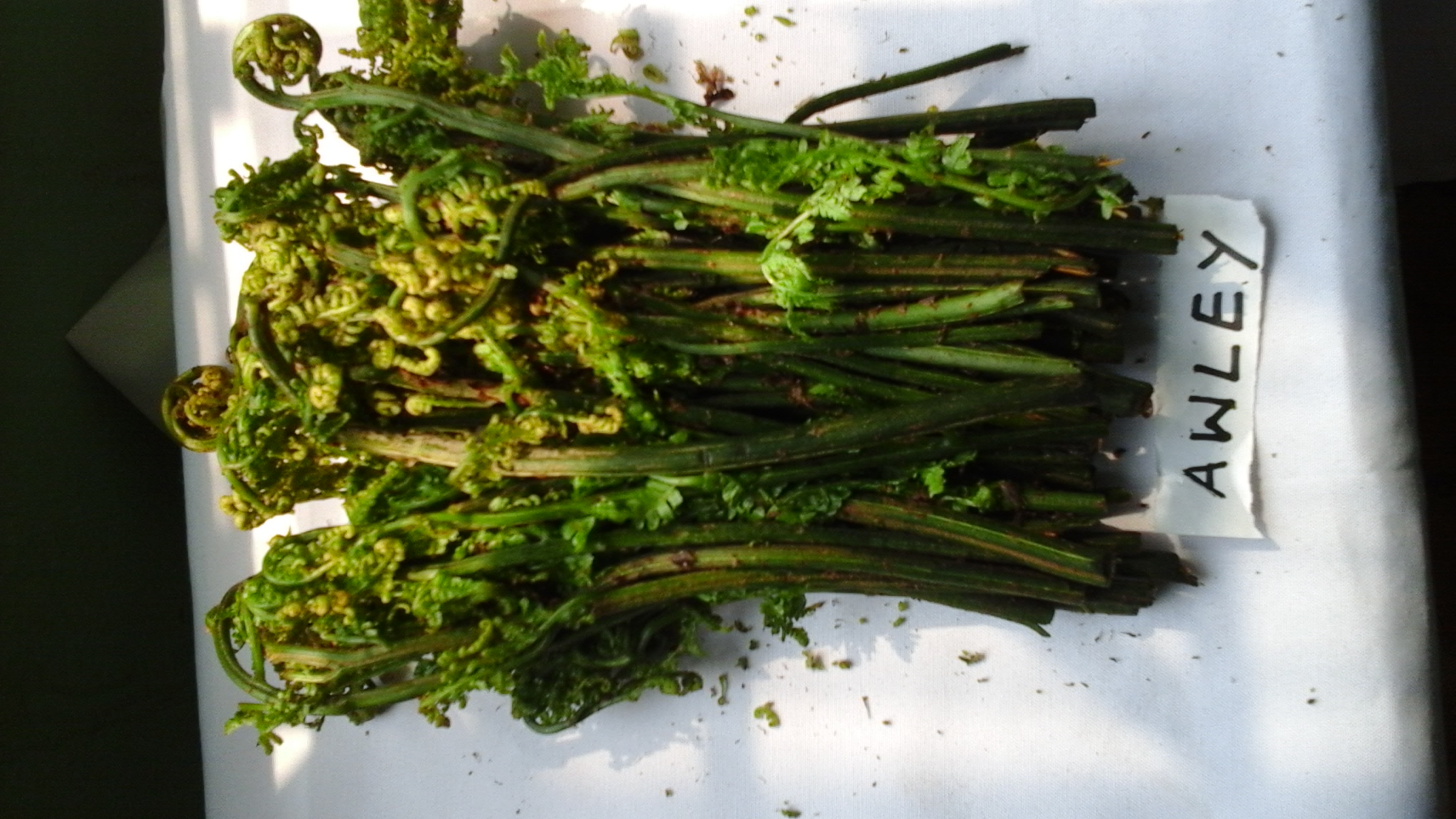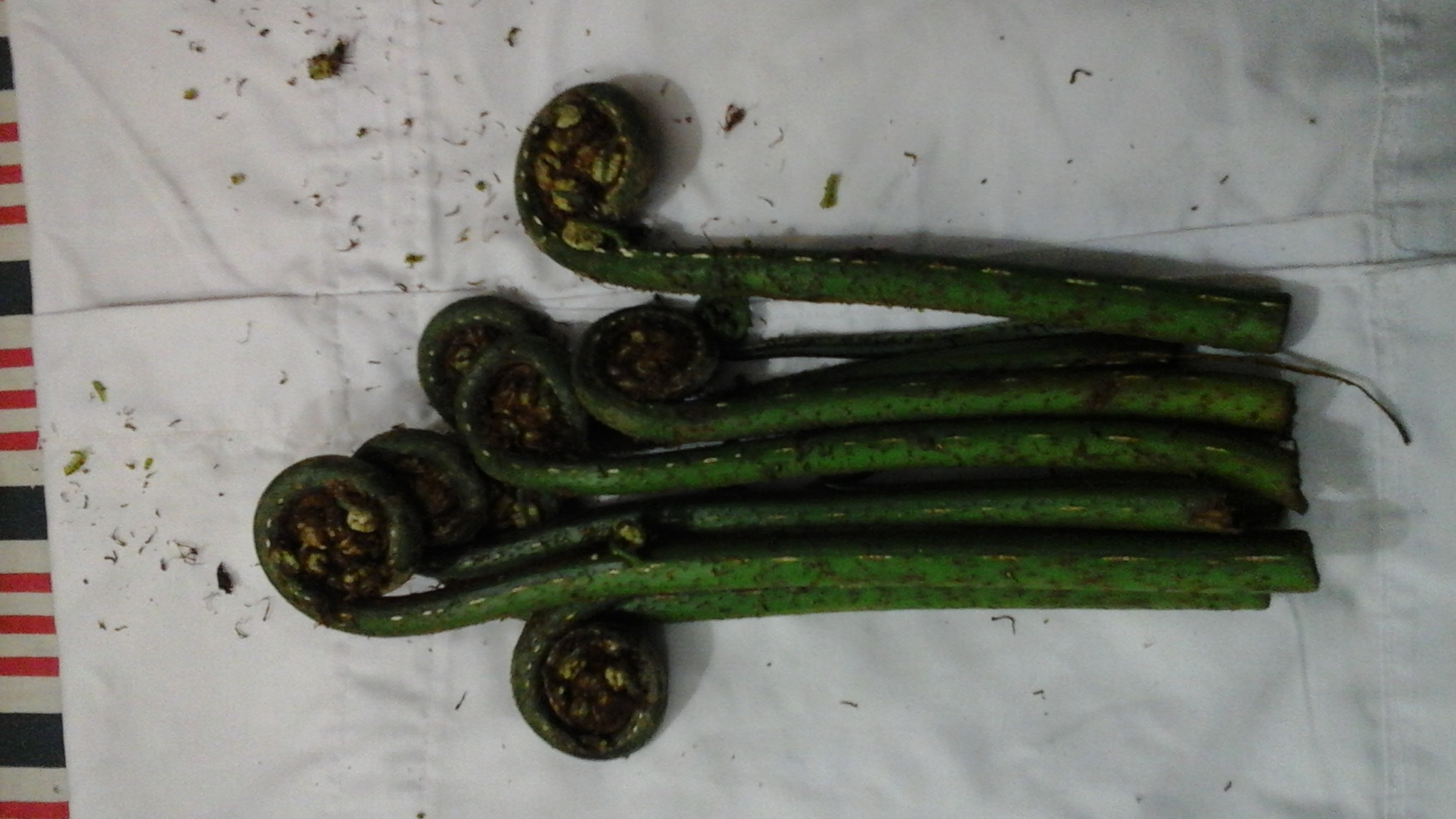|
Identification of diplazium species. : 6 posts by 2 authors. 6 images.
I am a student of Masters in Sikkim University. I have been studying about the ferns, diplazium species but I have not been able to identify different species. Many varieties are available in the market but its a PROBLEM to identify them and know their botanical name. I have attached some pictures too. I would be grateful if you could help me in this matter. figure number 4 is most likely young shoots of the fiddlehead fern.
edible. many ferns develop these difficult to id in this state. see wikipedia essay. even the europeans go to the woods to forage and bring these back to eat in salads and sandwiches after cooking. It can be full of pests hence the cooking after thorough washing and not make a regular meal… thiaminase content, wiki also mentions it. READ IT CAREFULLY. and it also makes a wonderful collage for botanical pictures i.e. like herbarium sheets, only more artistic PS: OTHERS I DONOT KNOW< LOCAL COLLEGE PROFESSORS or ETHNOBOTANISTS CAN perhaps be of help. pss number five and six are also fiddle head ferns of what variety … i do not know Have to do it after I get back as the internet is slow here in Shillong. I published details of Diplazium on the market in my Book, Taxonomic Revision of 300 Indian Pteridophyte species (2008). Diplazium esculentum (Retz.) Sw. ?? I produced an account of the use of Diplazium species (etc.) as vegetables in Nepal etc. as we used to use them there ourselves.
I will try to photograph it and send it to you this weekend (I have to go off to hospital today). There are two main species eaten, D. maximum (dhaunte Ningro) and D. esculentum (shrawanre Ningro). But also D. kawakami (jire uniu in Nepali) and D. stoliczkae. I can vouch for the fact all are good, but the best is D. maximum.
I’ll try to identify the bunches (from the scales), but have to go off soon this morning.
You are welcome to email me about them. …
|
Disclaimer
1. For any mistake in identification or for becoming efloraofindia e-group member (for contributing towards building of efloraofindia or otherwise), pl. mail to indiantreepix@googlegroups.com or itpmods@googlegroups.com
2. For better viewing of species’ pages, colour scheme & formatting is being followed as: Description of the species, Details of other flora species on the same page, Uses/ harms, Distribution, Abundance/ Location/ Flowering time & date, Habit & habitat, Etymology & pronunciation, Other interesting information, stories etc., Others, Botanical names, Common names, Main point of discussion below, Discussion about Botanical names.
Navigation
- Award for eFloraofIndia
- Colour scheme & formatting
- Copyrights, Permissions, Citations
- eFloraofIndia appreciated
- Names of Plants in India site
- Flowersofindia site
- Posting Guidelines
- For members’ information
- Logo, Tagline, Acronym
- Volunteers required
- ‘Pitamah’ of eFloraofIndia
- ‘अजेय’ ‘Ajey’ of eFloraofIndia
- ‘Saarthi’ ‘सारथि’ of eFloraofIndia
- ‘Jewel’ of eFloraofIndia
- ‘Grassman’ of eFloraofIndia


